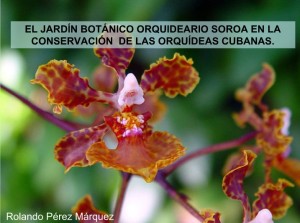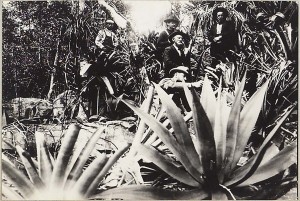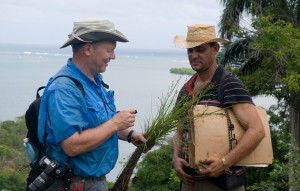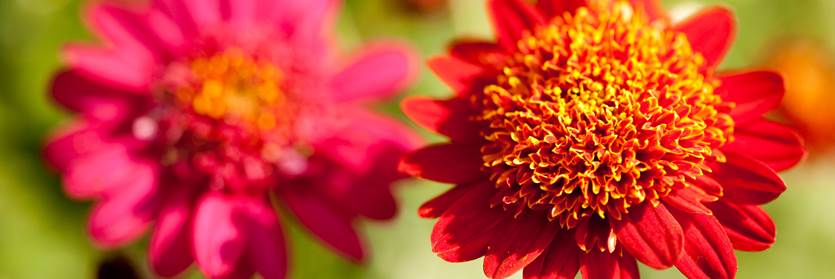Inside The New York Botanical Garden
botanical research in Cuba
Posted in Science on August 17 2010, by Plant Talk
View the Diversity, Distribution, and Status of 45 Species
 |
Brian M. Boom, Ph.D., is Director of the Caribbean Biodiversity Program at The New York Botanical Garden.
|
 Regular readers of Plant Talk may recall the post I co-wrote during The Orchid Show: Cuba in Flower in March that highlighted the long history and current program of plant exploration in Cuba by scientists of The New York Botanical Garden. Orchids are one of the most diverse of flowering plant families in Cuba, where some 497 species and varieties are known, of which about 181 (36%) are endemic to the island.
Regular readers of Plant Talk may recall the post I co-wrote during The Orchid Show: Cuba in Flower in March that highlighted the long history and current program of plant exploration in Cuba by scientists of The New York Botanical Garden. Orchids are one of the most diverse of flowering plant families in Cuba, where some 497 species and varieties are known, of which about 181 (36%) are endemic to the island.
Cuban botanists presently consider that at least 32 species of orchids are threatened due to various factors such as habitat modification and climate change. However, the process of evaluating at-risk species in Cuba, and elsewhere, is far from complete. The Botanical Garden is currently developing a new method to evaluate at-risk species much more rapidly than has been done traditionally so that we can get a more complete view of the status of plants in Cuba and throughout the Caribbean. (See page 6 of Garden News.)
Read More
Posted in Science on March 11 2010, by Plant Talk
A Century of Plant Exploration and Research
 |
 |
Brian M. Boom, Ph.D., is Director, Caribbean Biodiversity Program, and Melissa Tulig, is Associate Director of the Herbarium at The New York Botanical Garden.
|
 The Orchid Show: Cuba in Flower in the Enid A. Haupt Conservatory provides an excellent occasion to draw attention to the Botanical Garden’s long history of plant exploration in Cuba and the Garden’s current scientific activities on the largest and most biologically diverse island in the Caribbean.
The Orchid Show: Cuba in Flower in the Enid A. Haupt Conservatory provides an excellent occasion to draw attention to the Botanical Garden’s long history of plant exploration in Cuba and the Garden’s current scientific activities on the largest and most biologically diverse island in the Caribbean.
Beginning in 1903 and as recently as October 2009, the Garden has collaborated with Cuban botanists and institutions in documenting and studying the Cuban flora, collecting more than 20,000 specimens on 23 expeditions. The Garden’s research in Cuba is active and ongoing.
(The black-and-white photo above from the Mertz Library Archives is from an expedition to the Isle of Pines in Cuba led by the Garden’s founder Nathaniel Lord Britton in 1916. The photo below, by Garden scientist Fabián A. Michelangeli, Ph.D., is from the most current expedition and shows Garden scientist Wayt Thomas, Ph.D., at left, with his Cuban student Waldo Bonet collecting sedges.)
 One good way to tell this story of more than a century of plant exploration in Cuba is through the more than 12,500 digitized specimen records currently available via the Garden’s C.V. Starr Virtual Herbarium. Some newly created Web features allow easy access to these data, and we recommend trying the following to explore the Garden’s history in Cuba and some of the plant diversity on the island as told by the specimens.
One good way to tell this story of more than a century of plant exploration in Cuba is through the more than 12,500 digitized specimen records currently available via the Garden’s C.V. Starr Virtual Herbarium. Some newly created Web features allow easy access to these data, and we recommend trying the following to explore the Garden’s history in Cuba and some of the plant diversity on the island as told by the specimens.
Read More

 Regular readers of Plant Talk may recall the post I co-wrote during The Orchid Show: Cuba in Flower in March that highlighted the long history and current program of plant exploration in Cuba by scientists of The New York Botanical Garden. Orchids are one of the most diverse of flowering plant families in Cuba, where some 497 species and varieties are known, of which about 181 (36%) are endemic to the island.
Regular readers of Plant Talk may recall the post I co-wrote during The Orchid Show: Cuba in Flower in March that highlighted the long history and current program of plant exploration in Cuba by scientists of The New York Botanical Garden. Orchids are one of the most diverse of flowering plant families in Cuba, where some 497 species and varieties are known, of which about 181 (36%) are endemic to the island.

